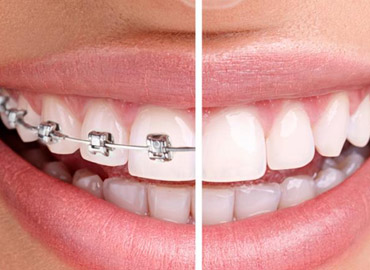The main purpose of orthodontia is to prevent the occurrence of disorders involving the teeth, jaw and...

The main purpose of orthodontia is to prevent the occurrence of disorders involving the teeth, jaw and facial region. At the same time, the specialist aims to stop the progression of existing disorders, to treat them and to provide a good aesthetic function (biting, chewing, speaking, laughing).
Why Orthodontic Disorders Occur?
- Depending on hereditary factors,
- Congenital anomalies (such as lips, palate)
- Incorrect functions (such as mouth breathing),
- Harmful habits (such as finger sucking, using a long pacifier),
- Premature loss of milk teeth due to caries,
- Trauma such as tooth creaking or falling, bumps,
It is caused by reasons.
Why Orthodontic Disorders Should be Treated?
Smooth teeth and jaws are an integral part of a good facial aesthetic, a beautiful smile. For this reason, disorders of the jaw joints, tooth structure and facial disturbances should be treated for aesthetic recovery. Same time;
- It helps the person to effectively extinguish, chew and speak the food.
- It reduces gum disease and decay, it contributes to healthy teeth and gums.
- Reduces the occurrence of functional problems such as jaw joint disorders and is an important part of the treatment of these disorders.
When should orthodontic examination be done?
Orthodontic treatment can be applied at any age. However, in order to benefit from growth and development, especially when there are problems that concern the jaw area, children need to be examined before they reach the age of full maturity (10-12 years).
In children aged 5-6 years, orthodontic examination is very useful for early detection of problems that might impair growth and development.
Protective Orthodontic Treatment
The purpose of these treatments is to prepare enough room for permanent teeth to continue smoothly. For this purpose, place holders are prepared which protect the prematurely lost milk teeth. It is also recommended by pedodontists for children who are prone to tooth decay.
Preventive Orthodontic Treatment
Bad habits can be described by various factors such as finger sucking, abnormal swallowing, etc. In order to prevent the problems that may arise or to make space for permanent teeth, various mobile devices can be prepared.
Fixed orthodontic treatment
After permanent teeth have been applied, the orthodontic treatment is now done with braces that stick on teeth and are not removed during treatment and wires that pass through these brackets. Some dental disorders allow braces to be applied to the internal surfaces of the teeth, so they can be completely invisible (Lingual Orthodontics). Fixed orthodontic treatment can be applied to all aged patients with healthy teeth and gums. It requires a long period of consolidation with various passive devices and invisible wires to protect the results obtained with the treatment.